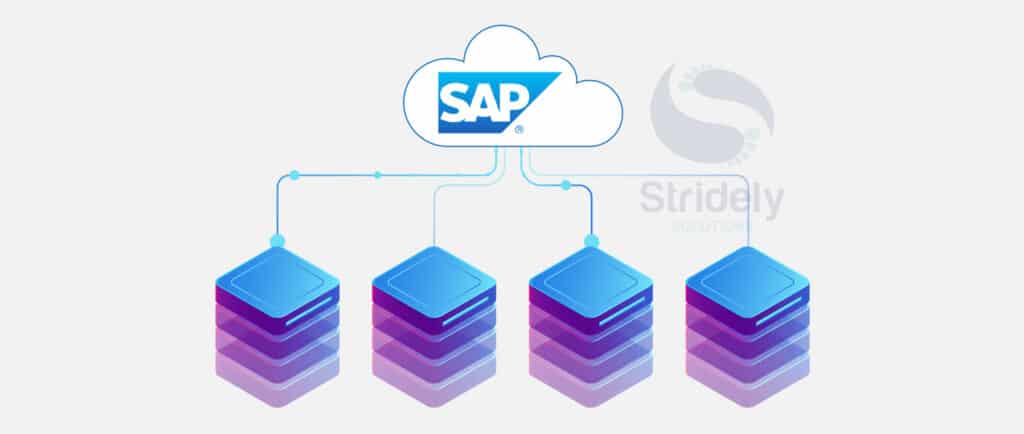SAP is without a doubt one of the best ecosystems to run and operate applications over the cloud. For one, it automates most of the backend operations with ease, and secondly, it streamlines all of the activities enhancing productivity and adding to the overall efficiency.
Now, it is not only the solution that is accountable for its widespread adoption. As a community, SAP rolls out new features and updates to keep the entire system robust and secure. One such tool released by the organization is SLT. This article is primarily designed to help you understand the specifics of SLT, advantages, and overall architecture. Without much ado, let’s get deep into the same.
What is SLT?
SLT stands for SAP Landscape Transformation Replication Server. In simple terms, it is regarded as the ideal solution in terms of replication of real-time data. The solution is meant for the SAP HANA customers and allows developers to source data from SAP ERP or even the non SAP system directly to the SAP HANA infrastructure. While some consider SLT to be an ETL tool and it is in fact one that helps the first load and later replicates the same in real-time.
When it comes to installing the solution, it could either be a core ECC system or even a separate system. SLT adopts a trigger-driven mechanism to initiate data transfer from the source to the target device. What’s more fascinating here is that the solution allows you to schedule the transfer, if not done in real-time.
SLT has a replication server that is responsible for responding to triggers and similar requests. An RFC connection is set up between the ECC transaction system and the SAP HANA DB which then responds to the trigger request
Wondering what are the advantages of using the SLT system?
Benefits
There are an array of things that make the solution an effective one. To help you understand better, here we outline the top advantages of the SLT SAP solution.
- The first and the most important benefit of the SAP SLT solution is that it allows replication of data in real-time. Whether you are an existing user of SAP or not, SLT provides the ease to load data and replicate the same.
- The basic definition of SLT suggests that it allows replication of data to the SAP HANA infrastructure. But that’s not enough. With SLT, developers can route data from multiple sources to a single SAP HANA or from one system to multiple SAP HANA.
- The entire concept of the tool is based on triggers. Meaning that it has no impact on the overall performance of the origin of the data. It is only when a trigger is initiated, will the tool facilitates the process of data replication.
- When replicating data, the one important thing to consider is the relevancy of the same. Adding redundant data to the system will only dilute the storage space. SLT tool assures that all of the data replicated are relevant and not a copy of the existing data.
- In case you wish to transform data or filter the same just before it is being replicated in the system, SAP SLT is the best solution.
While the above was the mainstream benefits of the solution, there is more to the technology.
- SLT provides total support to the cluster as well as pool tables.
- SLT is bestowed with the monitoring capabilities backed by the SAP solution manager.
- Integrated with SAP HANA studio, SLT comes with an automated conversion feature that allows it to convert Unicode and non-Unicode characters before replication.
SLT Architecture between SAP System & SAP HANA – An Overview
Getting deeper into the concept of SLT, we now discuss the architecture existing between the SAP HANA and the SAP solution. Developers and engineers can effectively transform the metadata table definitions to SAP HANA using the SAP SLT Replication Server.
With respect to the source SAP infrastructure, the connection made with SLT bear the following features:
-
For every table replicated, a separate logging table is created in the source by the SAP SLT Replication server.
-
The next step involves the creation of Read Engine in the SAP source system.
-
Now an RFC connection is set up to draft a link between the SAP SLT server and the SAP Source.
-
Next, a database connection is set up between the SAP SLT server and the destined SAP HANA infrastructure.
-
Database users having the authorization as that of the user “SYSTEM” will have the ease to set up a connection between the SAP HANA database and SAP SLT.
The SAP SLT Server can also automatically set up the database connectivity with SAP HANA (when a new configuration is done using the transaction LTR). Here, you aren’t required to follow the manual process for the same.
A fascinating thing about the tool is that it isn’t just meant for the replication of data from the SAP system to SAP HANA but also extends to the non SAP to SAP HANA.
Similar to the above, developers and engineers can effectively transform the metadata table definitions to SAP HANA from a non SAP system.
-
For every table replicated, a separate logging table is created in the source by the SAP SLT Replication server.
-
The next step involves the creation of Read Engine in the SAP SLT Replication server.
-
Lastly, a connection in the form of DB is set between the SAP SLT and SAP Source
Conclusion
Having said that, if you aren’t sure if you could implement the solution all by yourself and seeking expert support, Stridely Solutions is happy to help. We are a team of SAP experts helping organizations and industries alike to move their enterprise data to the SAP HANA infrastructure.
Whether you are just starting or in the middle of the transformation, our experts are happy to help. Stridely Solutions has years of experience in working over cloud solutions and has helped multiple organizations migrate and replicate their data without any obstruction. For detailed information, contact our team.


